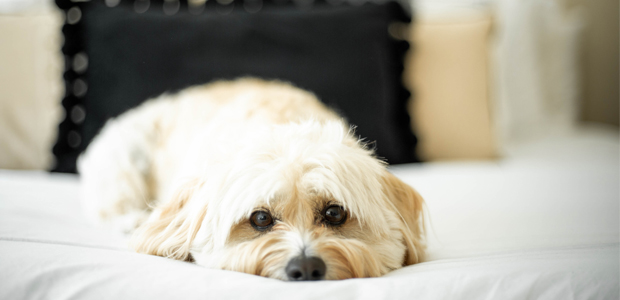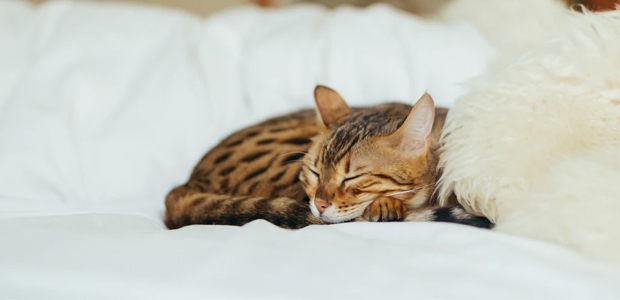What Time the Night Before Neutering Should I Not Feed My Dog
Neutering is a great idea if you don't plan to breed from your dog or cat. The procedure is routine and harmless, but it can be a daunting prospect for many owners.
To help set your mind at ease, here's some useful info on how to prepare your pet for their procedure and how to look after them once they get back home.
Read more: Why should I neuter my dog?
Read more: Why should I neuter my cat?
What to do before the procedure?
The night before
Feed your pet a standard meal at around 8pm. After this, do not feed them at all until after their procedure - this includes treats and snacks.
At this point, it's fine to leave water out for your pet to drink.
Keep your cat inside overnight - and make sure they have access to a clean litter tray.
Try to make sure your dog is nice and clean ahead of their procedure; this might mean bathing them but don't worry too much if you can't do this. Your vet will be able to advise if you're concerned.
In the morning
Continue to avoid feeding and remove their access to water three hours before surgery. I.e., if their appointment is first thing in the morning, take away their water bowl at 6am, if their appointment is at one in the afternoon, take away their water at 10am.
Let your dog outside to do their business, but keep them on the lead. Ideally, make sure they stay nice and dry - this will help minimise the risk of wound infections.
Arriving at the practice
When you get to the practice, the vet or nurse will check over your dog/cat. At this point you can ask any questions you may have about the procedure and once you are happy with everything you will be asked to read and sign an informed consent form.
Your pet will then be given a mild sedative and placed in a comfy kennel area while the vet prepares the anaesthetic.
The operation will be completed within the next few hours and you will have been given a time to call for a progress report and to arrange a discharge appointment.

What will happen after the procedure?
In most cases, your pet will be ready to go home on the same day, a few hours after the procedure.
After their operation, your pet will be kept under observation. This is a routine process, and helps the vet make sure all is well.
Don't worry if you're unsure who to contact or when to pick your pet up, your vet or nurse will make you aware of this ahead of the procedure.
Caring for your pet at home
24-48 hours after the procedure
Make sure you're free to supervise your pet throughout the night and day following their operation. They'll probably be drowsy after surgery - this is normal and will go away after a day or two, once the medication has worn off.
2-3 days after the procedure
You'll attend the first of two check-ups following the procedure. This is nothing to worry about, it's just so the vet can make sure everything's as it should be.
7-10 days after the procedure
You'll attend the second check-up. Of course, don't hesitate to contact your vet if you notice anything unusual between the two appointments.
10 -14 days after the procedure
Depending on the type of stitches the vet has used, you'll attend one final follow-up appointment for stitches to be removed.
Plenty of rest and protection
For 7-10 days after their procedure, your pet will need plenty of rest. This might involve keeping them in their crate/carrier, or confining them to one room of the house. Make sure your cat has access to a clean litter tray and when you let your dog out to the toilet, make sure you keep them on the lead.
To keep their wound protected, we recommend providing your pet with a medical shirt, rather than the traditional surgical cone.

Why is a medical shirt better than the traditional cone?
We recommend medical shirts for two main reasons: they're more comfortable for pets and more effective at keeping their wounds protected.
A medical shirt will keep your pet warm and cosy, which will help reduce anxiety as their medication wears off. Shirts also contain pouches where you can place an ice pack, helping to cool your pet down if they're excessively itchy.
The inner lining of the medical shirt is light-coloured, which means the vet can easily investigate discharge if they need to.
Shirts are also double-layered to maximise air circulation - working to maintain your pet's temperature and giving their wound plenty of space to breathe.
Need more info?
For more help and advice on your pet's neutering procedure, have a chat with your local vet. Locate your nearest vet using our Find a Vet page, or chat to a vet online today!
andersongoiderink.blogspot.com
Source: https://www.myfamilyvets.co.uk/neutering-your-pet-before-and-after
0 Response to "What Time the Night Before Neutering Should I Not Feed My Dog"
Publicar un comentario